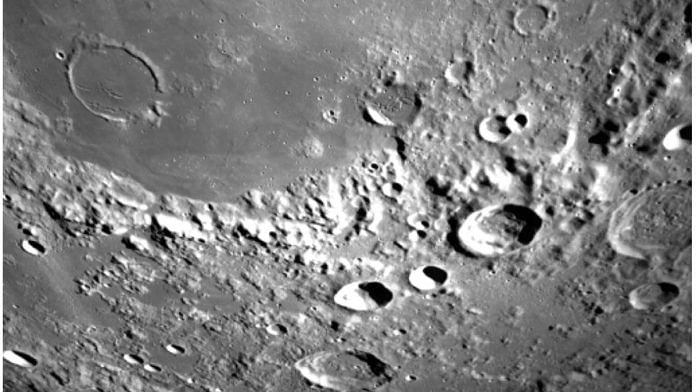Indian Space Research Organisation (ISRO) shared a video Friday, showing the Chandrayaan-3 rover ramping down from the lander on the moon’s surface.
The smooth rollout of the rover Pragyan was captured by the lander imager camera, the space agency said, as it took place on 23 August.
The mission’s lander module, Vikram, made a historic touchdown only hours earlier – precisely at 6.04 pm on 23 August – making India the first country to reach the lunar south pole.
… … and here is how the Chandrayaan-3 Rover ramped down from the Lander to the Lunar surface. pic.twitter.com/nEU8s1At0W
— ISRO (@isro) August 25, 2023
“India took a walk on the moon!” ISRO shared the next day, confirming that Pragyan had successfully been rolled out.
Chandrayaan-3 blasted off from the spaceport in Sriharikota, Andhra Pradesh on 14 July, and took 41 days to reach the moon’s surface, a feat that could not be accomplished by the previous mission, which had successfully launched the orbiter but failed to soft-land Vikram in 2019.
After the touchdown, ISRO shared images of the moon’s surface as taken by Vikram’s cameras while the spacecraft was descending, and also one after it had come to its resting position.
Chandrayaan-3 Mission:
The image captured by the
Landing Imager Camera
after the landing.
It shows a portion of Chandrayaan-3's landing site. Seen also is a leg and its accompanying shadow.
Chandrayaan-3 chose a relatively flat region on the lunar surface 🙂… pic.twitter.com/xi7RVz5UvW
— ISRO (@isro) August 23, 2023
ISRO posted on X Thursday that all activities were on schedule, and all systems were normal.
Three of the lander module payloads — ILSA, RAMBHA and ChaSTE – were turned on Thursday, and Pragyan was freely roving the lunar surface, ISRO said, adding the SHAPE payload in the propulsion model – which separated from Vikram on 17 August – was turned on Sunday.
ISRO also shared a video of the moon’s surface as captured by Vikram just before touchdown.
Here is how the Lander Imager Camera captured the moon's image just prior to touchdown. pic.twitter.com/PseUAxAB6G
— ISRO (@isro) August 24, 2023
The solar-powered Vikram and Pragyan will work for one lunar day or 14 Earth days when there will be sunlight.
The duo are carrying six scientific instruments or payloads to explore the moon’s surface, particularly to the region’s water ice – which could be a source of oxygen, fuel and water for future moon missions or for a more permanent moon colony.
Pragyan can communicate only with Vikram, which in turn will communicate with earth directly.
Also read: ‘India don dey Moon now’: How world media reported Chandrayaan-3, from Pidgin to Queen’s English






